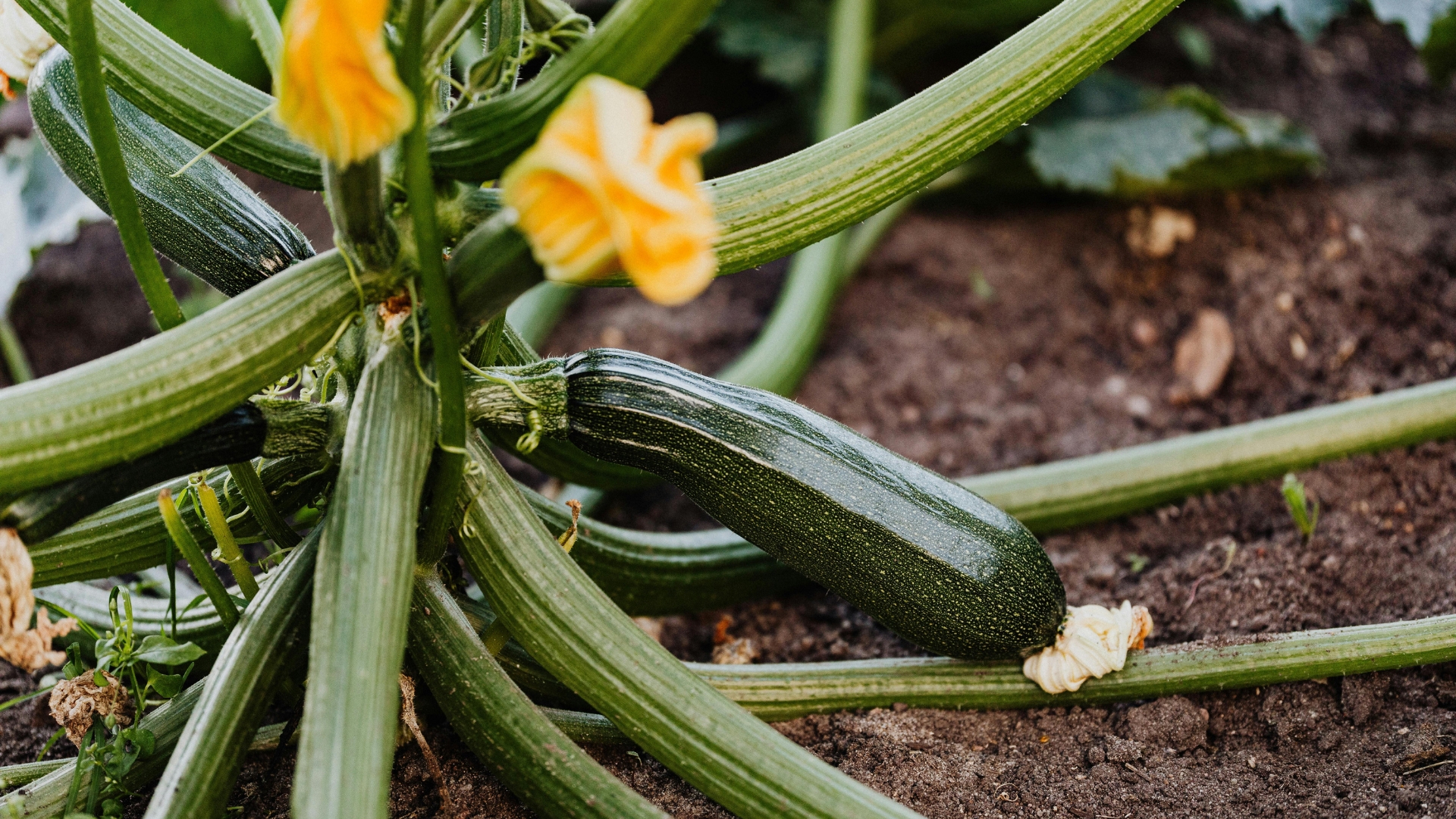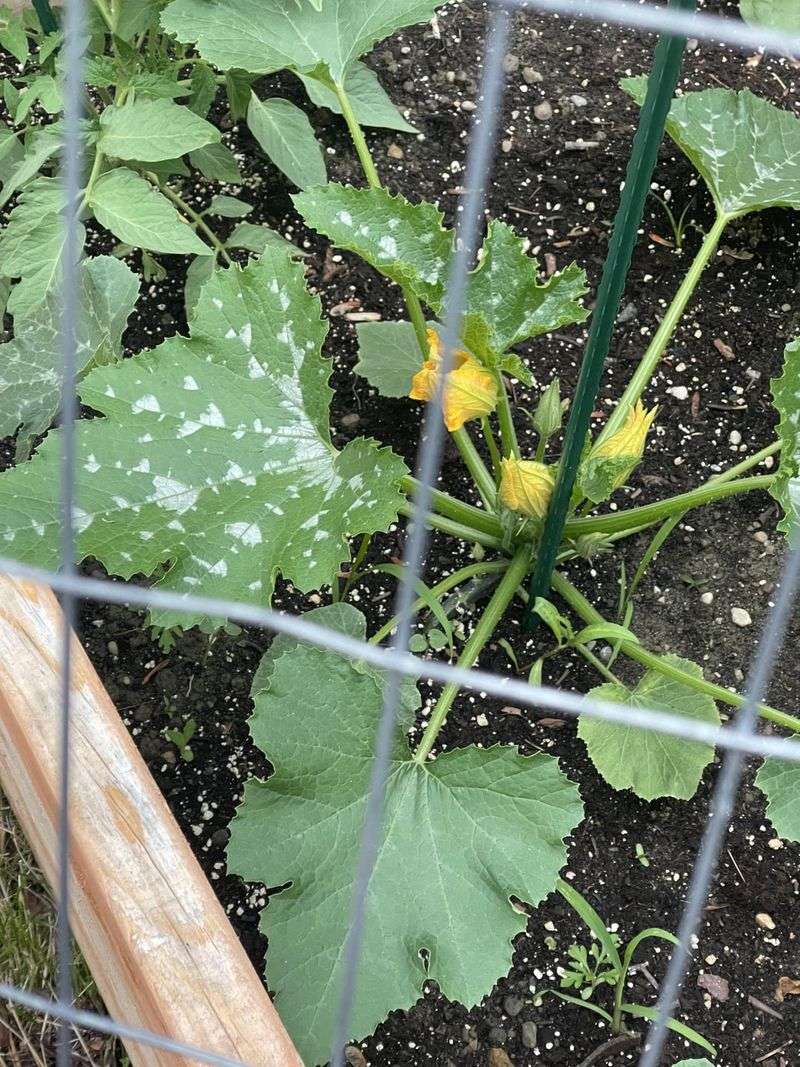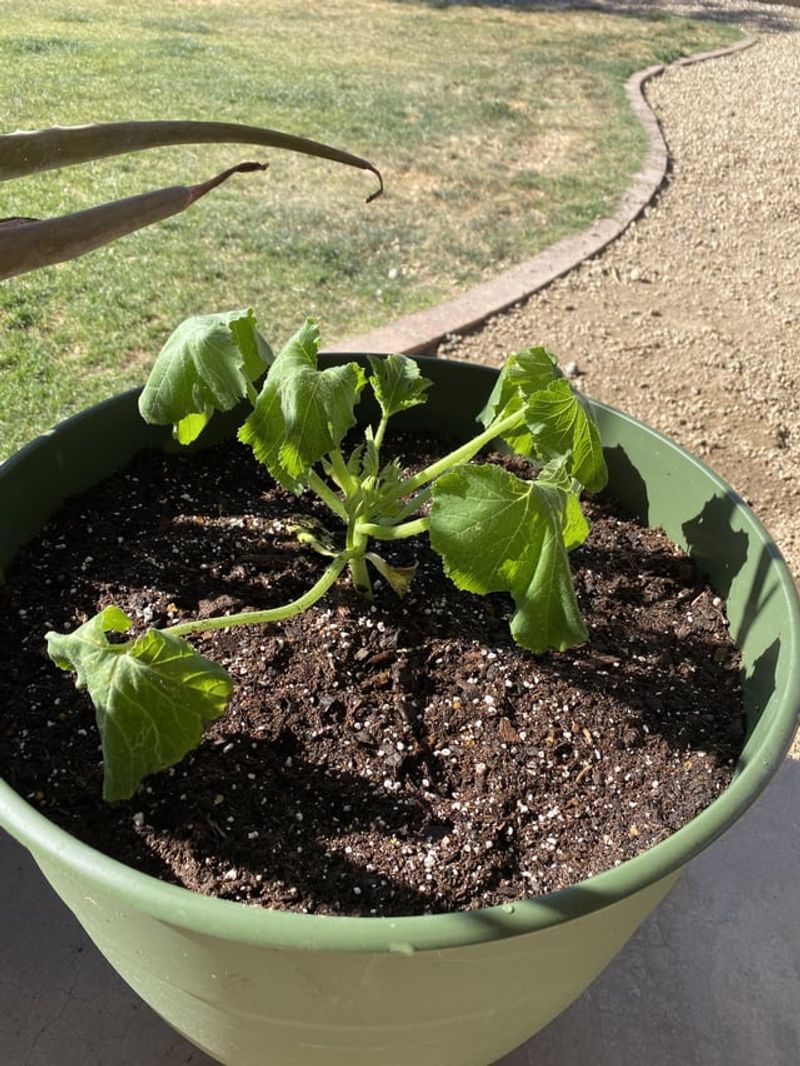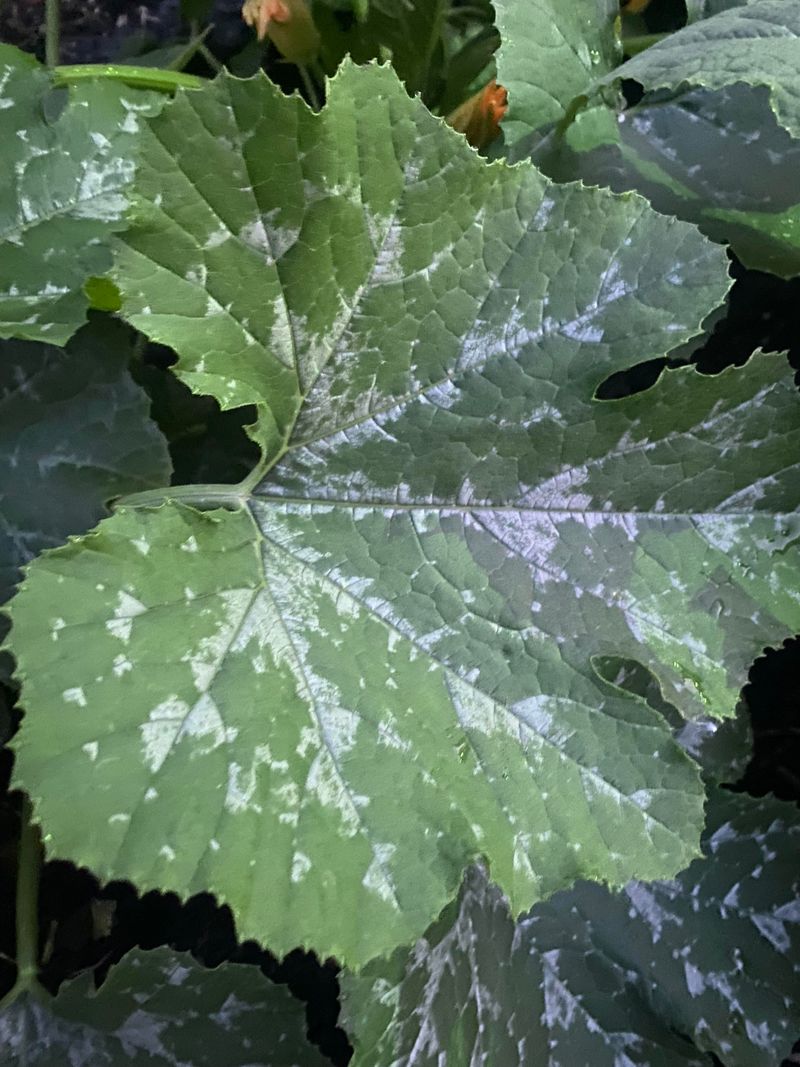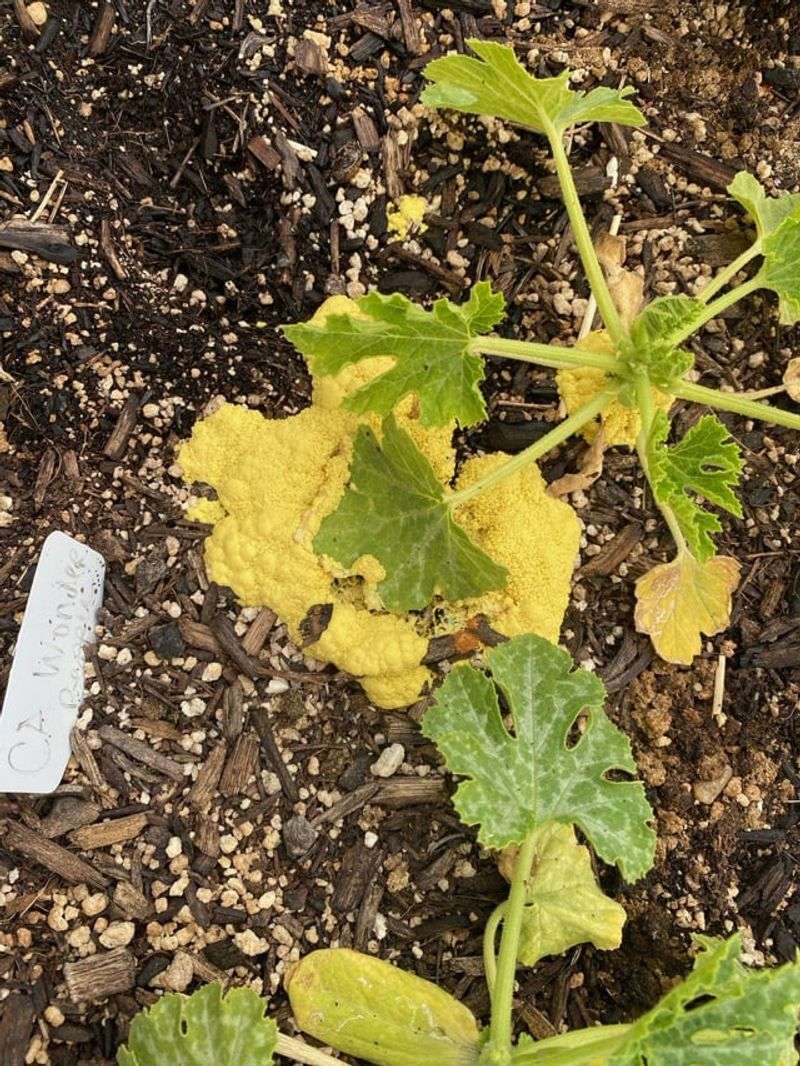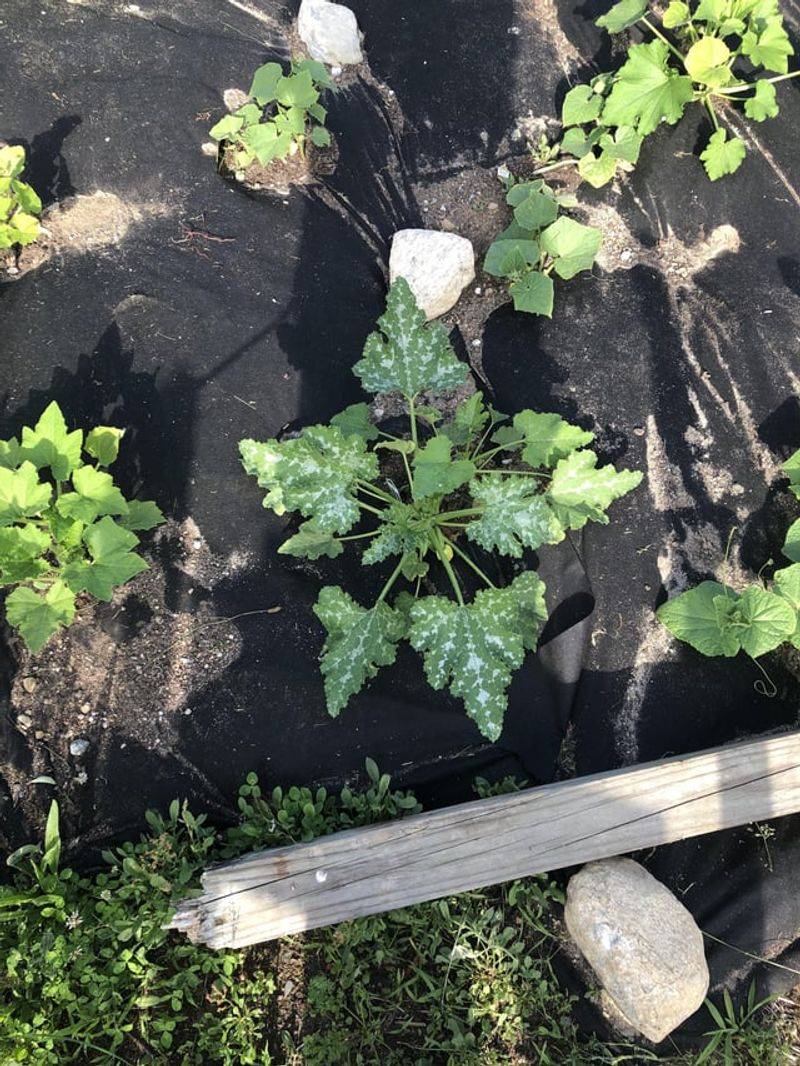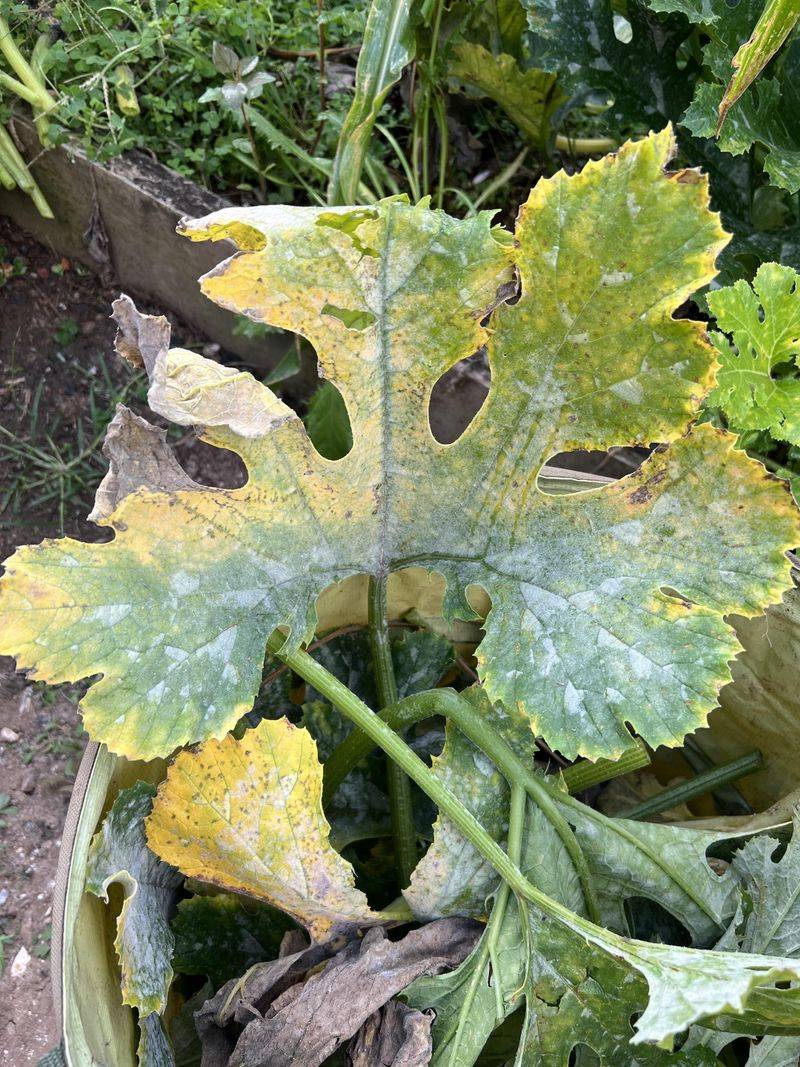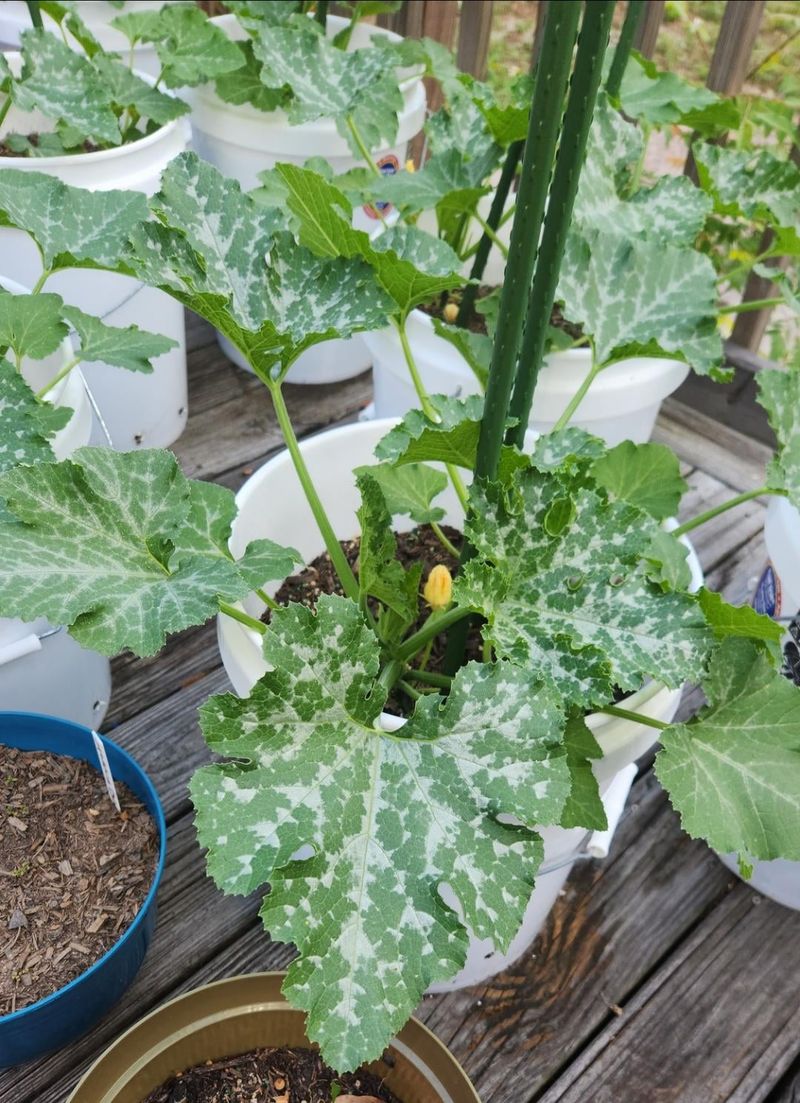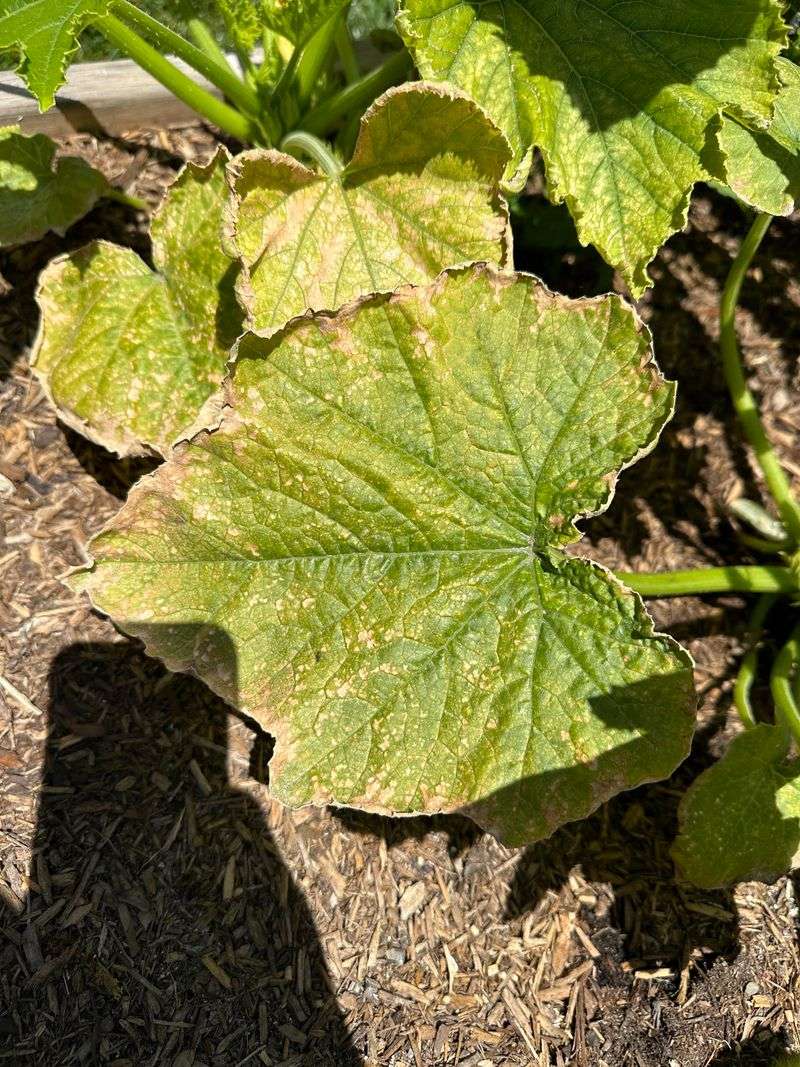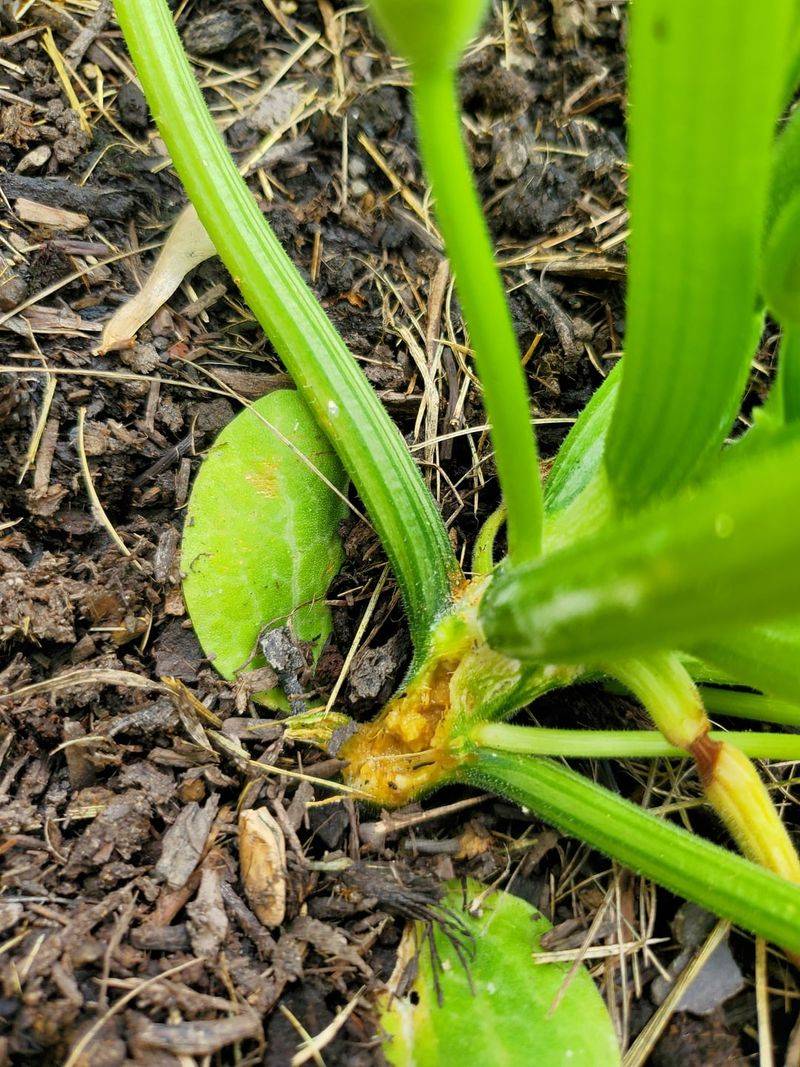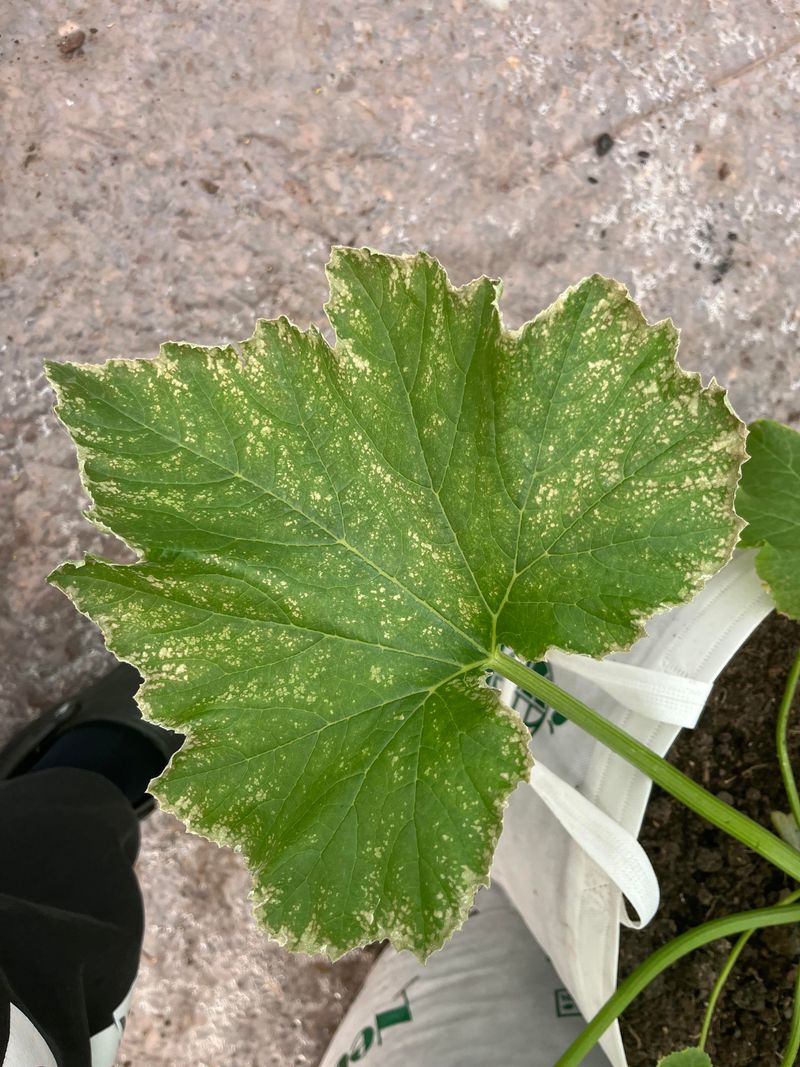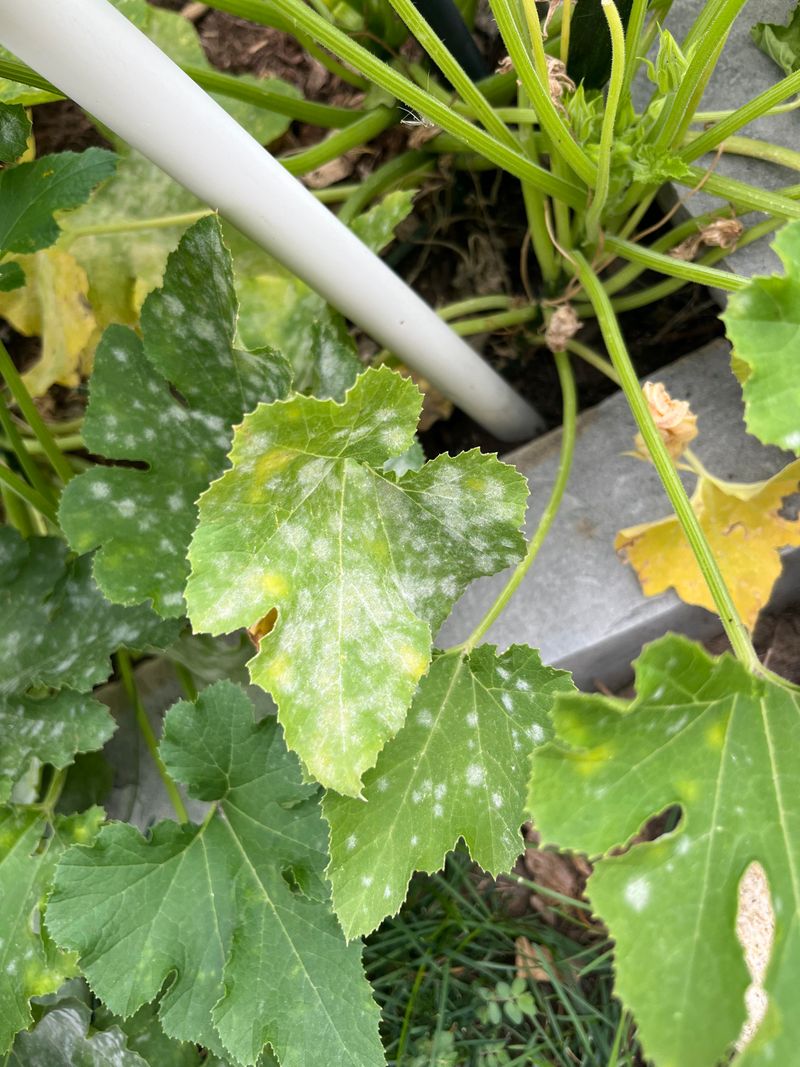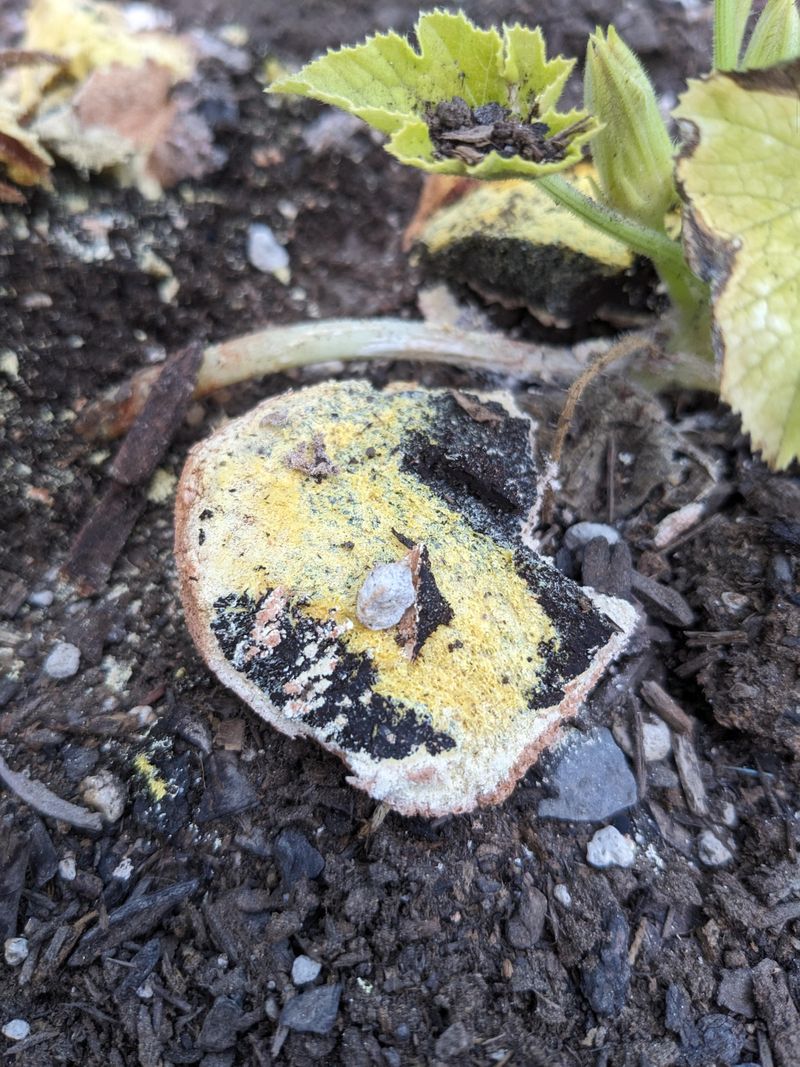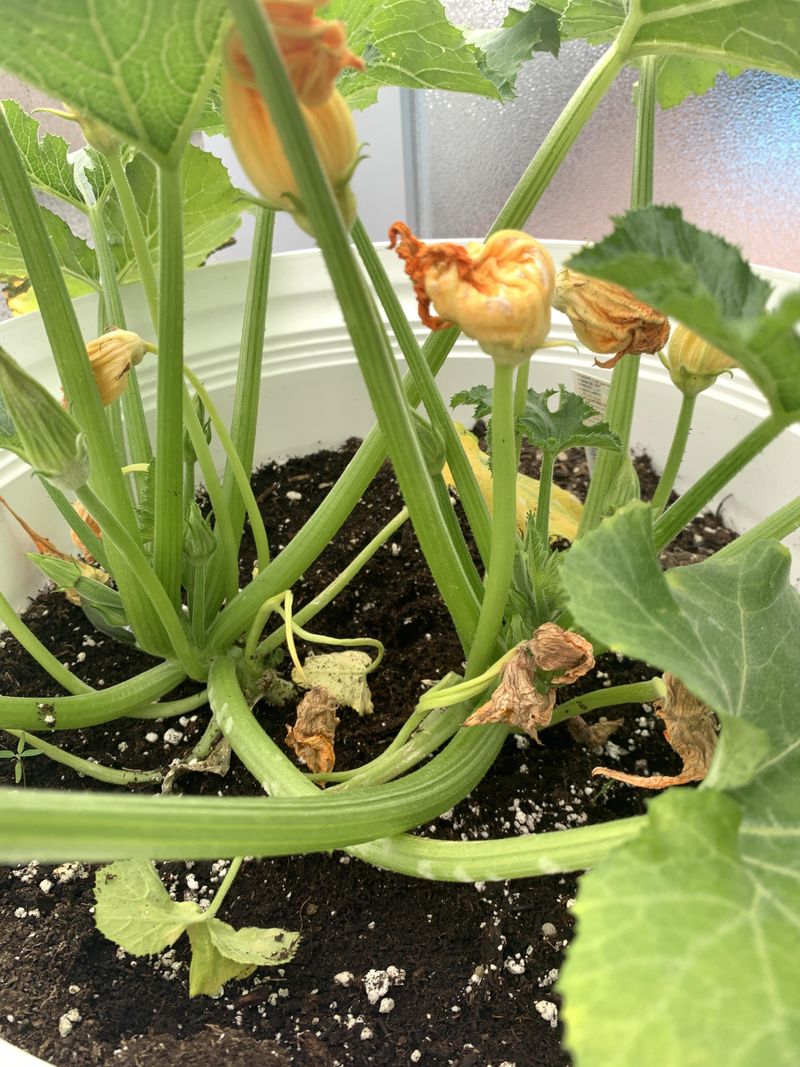Brown leaves on zucchini can be sneaky—at first it looks like just a little stress, but then things get worse fast. Had a patch go from healthy to sad in less than a week, and it turned out fungus was the culprit.
The signs aren’t always obvious, but once you know what to look for, it’s way easier to stop the spread. From weird spots to sudden wilting, these clues can save the whole plant if caught early.
Don’t wait for the whole zucchini bed to crash—these warning signs are worth checking.
1. Spotty Affair
Ever spot tiny brown dots peppering your zucchini leaves? Those little guys might just be the early stages of a fungal invasion. These spots often start small and can spread quickly, covering larger portions of the leaf.
They might look harmless, but over time, they can cause significant damage. Keep a close watch and consider a gentle fungicide to help your plants fight back. Alternatively, try removing the affected leaves to stop the spread.
Early intervention is key here. Don’t let these diminutive dots get the better of your garden pride and joy!
2. Wilting Woes
Is your zucchini plant looking a bit droopy, despite your best watering efforts? Wilted leaves could be a sign of something more sinister than a thirsty plant. Certain fungi can block the plant’s ability to absorb water.
This can leave your plant looking wilted, even when the soil is moist. If you notice this happening, it’s time to investigate further. Check for root rot and ensure proper drainage to keep your zucchinis thriving.
Don’t let wilting woes bring down your gardening spirit—sometimes, it just takes a bit of detective work to solve the mystery!
3. Mildew Menace
There’s nothing like the surprise of waking up to find your zucchini leaves dusted with what looks like powdered sugar. This powdery mildew is a common fungal issue among zucchini growers.
It thrives in warm, dry conditions, often appearing on the tops of leaves first. Don’t worry, though! Regularly spraying with a milk-water solution can help keep this mildew in check.
Keep an eye out for this sneaky culprit, and you’ll be well on your way to maintaining a healthy, flourishing zucchini patch. Remember, a little vigilance goes a long way!
4. Leaf Curl Conundrum
Ever noticed your zucchini leaves curling up like they’re trying to make themselves into little cocoons? This could be a sign of a fungal infection disrupting their growth.
Leaf curl can often be accompanied by a change in leaf color or texture. To rectify this, ensure your plants have adequate airflow and are not overcrowded.
Prune back dense foliage to allow the sun to reach all parts of the plant. Sometimes, a little extra space is all they need to stretch back out to their leafy glory!
5. Yellow Halo
Ah, the mysterious yellow halo—that striking contrast can be quite the garden curiosity. If you see yellow rings around brown spots, it might be time to take action.
This halo effect is often a sign of a fungal infection that could spread if left unchecked. A fungicide or homemade remedy can help keep this colorful threat at bay.
Remember to remove severely affected leaves to prevent further spread. It’s all about taking that proactive approach and keeping your zucchini plants in tip-top shape!
6. Fuzzy Coating
Fuzzy coatings on your zucchini leaves? This is no ordinary fuzz! It’s often a sign of a fungal mold setting up shop.
These molds can spread rapidly in humid conditions, so it’s crucial to act fast. Regular pruning and ensuring your plants have plenty of air circulation can help mitigate this issue.
Use organic fungicides if needed, and keep those fuzzies from turning your garden into a fungal paradise. With a little care, your zucchinis will be as good as new!
7. Damp Dilemmas
Ever felt a zucchini leaf and found it soggy or damp? That’s often not a good sign—it could indicate a fungal infection thriving in excess moisture.
This dampness can lead to rot if not addressed promptly. Consider improving drainage and being mindful of overwatering, especially during humid weather.
Keep an eye out for soggy patches and adjust your watering routine as needed. Your zucchinis will thank you for the extra attention!
8. Stunted Growth
When your zucchini plants seem stuck in a growth rut, it might not just be a nutrient issue. Fungi can interfere with root functions, causing stunted growth.
Make sure to check the root system for any signs of rot or damage. Good soil management and regular soil health checks can prevent this from becoming a persistent problem.
A little extra love goes a long way in helping your zucchinis grow into the robust plants they’re meant to be!
9. Brown Veins
Noticed the veins of your zucchini leaves turning brown? That’s often a red flag for fungal activity interfering with nutrient flow.
This can lead to weakened leaves and eventually affect the whole plant. Regularly monitor your plants and remove any leaves that seem severely affected.
Consider a balanced fertilizer to give your plants the boost they need to fight off the infection. Keep those veins vibrant and your zucchinis will continue to thrive!
10. Rusty Tinges
Rusty orange spots on zucchini leaves are not a fashion statement—they’re a cry for help! These spots are often signs of rust fungus.
This type of fungus loves warm, moist conditions and can spread quickly if not addressed. A good quality fungicide can help keep this rust at bay.
Regular garden checks and removing affected leaves can prevent this rusty problem from spreading. Keep your zucchinis looking fresh and fabulous!
11. Mushy Stems
Mushy stems can be a gardener’s worst nightmare, often signaling a dreaded fungal rot. These fungi can strike when the soil stays too wet for too long.
Ensure your soil has excellent drainage and avoid watering late in the day. This helps prevent water from sitting and leading to rot.
With some quick action, you can stop mushy stems from ruining your zucchini crop. Stay vigilant and keep that garden healthy!
12. Leaf Blight
Large, irregular brown patches on zucchini leaves can often mean leaf blight has made its unwelcomed entrance.
This disease can spread rapidly, especially in wet conditions. Regular removal of affected leaves and proper spacing can help reduce its impact.
An organic fungicide can also aid in keeping blight at bay. With some proactive measures, your zucchinis will remain vibrant and productive!
13. Distorted Leaves
When leaves start to look more like abstract art than healthy foliage, it’s time to get concerned. Distorted leaves can be a sign of fungal pathogens affecting growth.
Ensuring proper nutrient balance and good air circulation can often rectify these issues before they worsen.
Sometimes, a small adjustment is all that’s needed to bring back the lush, green beauty of your zucchini plants. Be the artist of your garden and keep everything in perfect harmony!
14. Spore Spread
Seeing what looks like dust but might just be spores? Fungal spores can be a sneaky way these diseases spread from leaf to leaf.
Use a gentle spray of water to wash them off and ensure regular monitoring to keep these spores from taking over.
Preventative fungicidal treatments can help keep things under control. Keep your zucchinis spore-free and thriving with regular care!
15. Soft Spots
Finding soft, discolored spots on your zucchini fruits themselves? It’s a sign that a fungal infection might be affecting more than just the leaves.
These spots can lead to rot if ignored. Ensure fruits are kept off damp soil and have good airflow to prevent further issues.
Regular inspections and quick action can save your zucchinis from becoming a fungal feast. Protect those fruits and enjoy a bountiful harvest!

